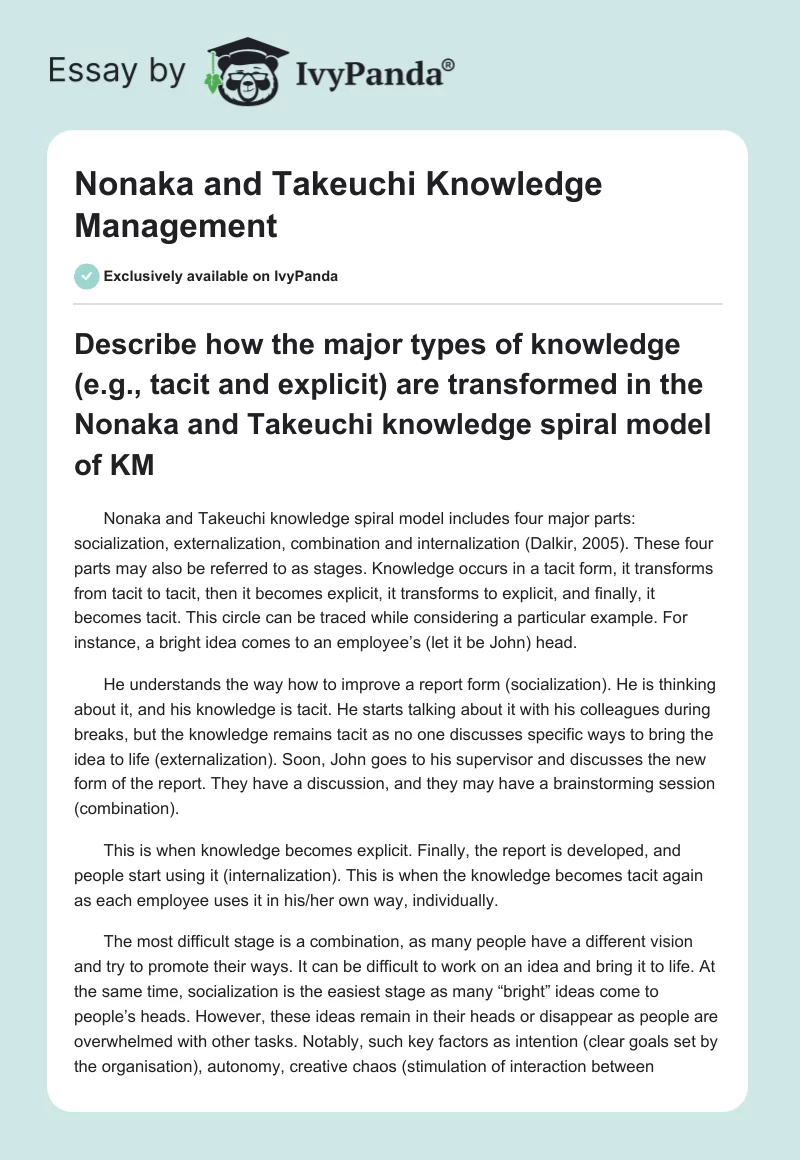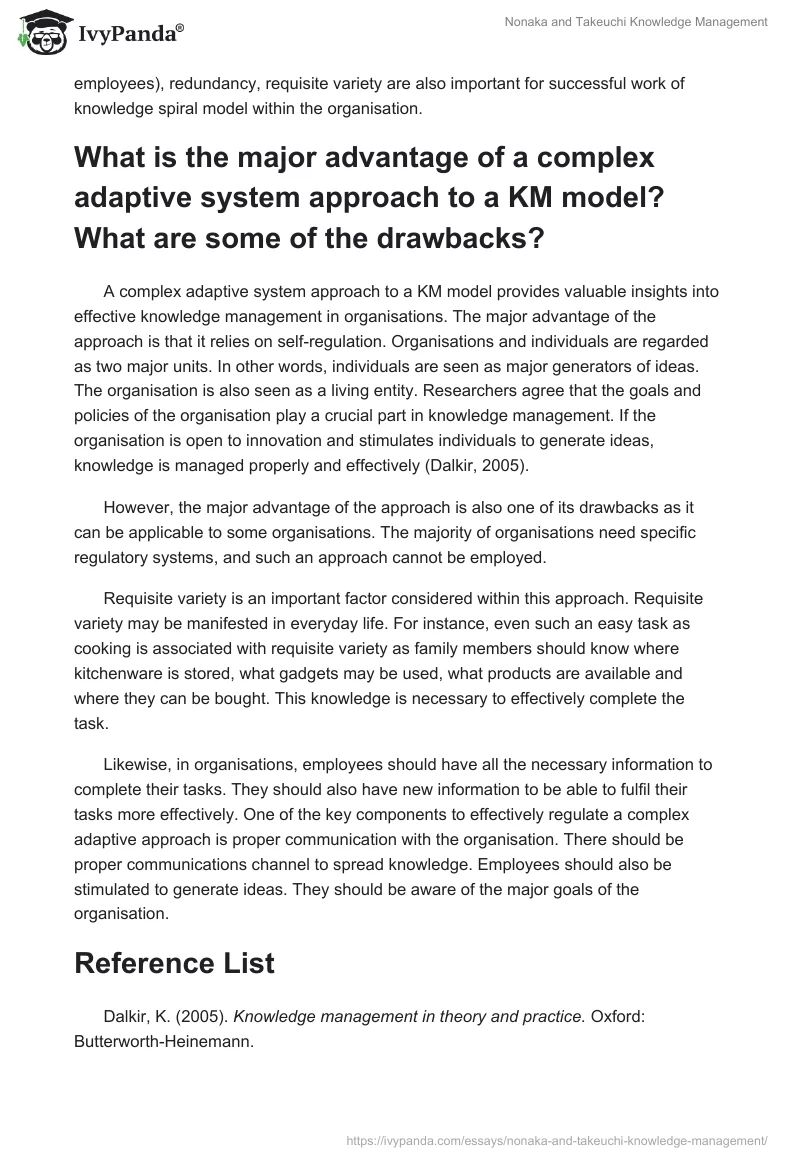Describe how the major types of knowledge (e.g., tacit and explicit) are transformed in the Nonaka and Takeuchi knowledge spiral model of KM
Nonaka and Takeuchi knowledge spiral model includes four major parts: socialization, externalization, combination and internalization (Dalkir, 2005). These four parts may also be referred to as stages. Knowledge occurs in a tacit form, it transforms from tacit to tacit, then it becomes explicit, it transforms to explicit, and finally, it becomes tacit. This circle can be traced while considering a particular example. For instance, a bright idea comes to an employee’s (let it be John) head.
He understands the way how to improve a report form (socialization). He is thinking about it, and his knowledge is tacit. He starts talking about it with his colleagues during breaks, but the knowledge remains tacit as no one discusses specific ways to bring the idea to life (externalization). Soon, John goes to his supervisor and discusses the new form of the report. They have a discussion, and they may have a brainstorming session (combination).
This is when knowledge becomes explicit. Finally, the report is developed, and people start using it (internalization). This is when the knowledge becomes tacit again as each employee uses it in his/her own way, individually.
The most difficult stage is a combination, as many people have a different vision and try to promote their ways. It can be difficult to work on an idea and bring it to life. At the same time, socialization is the easiest stage as many “bright” ideas come to people’s heads. However, these ideas remain in their heads or disappear as people are overwhelmed with other tasks. Notably, such key factors as intention (clear goals set by the organisation), autonomy, creative chaos (stimulation of interaction between employees), redundancy, requisite variety are also important for successful work of knowledge spiral model within the organisation.
What is the major advantage of a complex adaptive system approach to a KM model? What are some of the drawbacks?
A complex adaptive system approach to a KM model provides valuable insights into effective knowledge management in organisations. The major advantage of the approach is that it relies on self-regulation. Organisations and individuals are regarded as two major units. In other words, individuals are seen as major generators of ideas. The organisation is also seen as a living entity. Researchers agree that the goals and policies of the organisation play a crucial part in knowledge management. If the organisation is open to innovation and stimulates individuals to generate ideas, knowledge is managed properly and effectively (Dalkir, 2005).
However, the major advantage of the approach is also one of its drawbacks as it can be applicable to some organisations. The majority of organisations need specific regulatory systems, and such an approach cannot be employed.
Requisite variety is an important factor considered within this approach. Requisite variety may be manifested in everyday life. For instance, even such an easy task as cooking is associated with requisite variety as family members should know where kitchenware is stored, what gadgets may be used, what products are available and where they can be bought. This knowledge is necessary to effectively complete the task.
Likewise, in organisations, employees should have all the necessary information to complete their tasks. They should also have new information to be able to fulfil their tasks more effectively. One of the key components to effectively regulate a complex adaptive approach is proper communication with the organisation. There should be proper communications channel to spread knowledge. Employees should also be stimulated to generate ideas. They should be aware of the major goals of the organisation.
Reference List
Dalkir, K. (2005). Knowledge management in theory and practice. Oxford: Butterworth-Heinemann.


